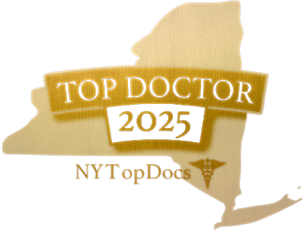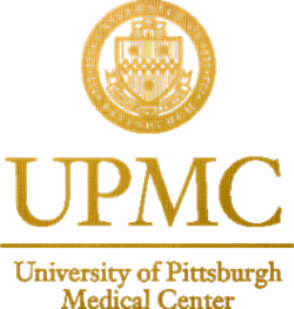
in New York & New Jersey

















Lower back pain that shoots into the leg—often diagnosed as sciatica—can make simple tasks feel overwhelming. In many cases, the cause is a herniated disc pressing on a spinal nerve.
When medications, injections, and physical therapy no longer bring relief, surgery may become the next step. Our NYC & NJ Endoscopic Lumbar Discectomy is one of the least invasive surgical options available. Using a camera-equipped tube and micro-instruments, Dr. Gbolahan Okubadejo can remove the portion of the disc causing nerve compression without disrupting surrounding tissue. At The Institute for Comprehensive Spine Care, patients across New York and New Jersey receive expert care built around precision, communication, and convenience. If you're looking for a fast, effective solution to disc-related back and leg pain, this may be the option that gets you moving again.
Endoscopic Lumbar Discectomy is a minimally invasive spine surgery that removes part of a herniated disc through a tiny incision in the back.
A narrow tube with a camera (endoscope) allows the surgeon to visualize the disc and nearby nerves clearly, while micro-instruments remove the part of the disc pressing on a nerve root. This procedure is ideal for patients with disc-related sciatica or nerve pain who want an alternative to open back surgery or even traditional microdiscectomy. Because it avoids cutting large muscles or removing bone, recovery tends to be faster and less painful.

The procedure typically takes about 45-90 minutes and is performed under local anesthesia with sedation or general anesthesia, depending on your needs.
A tiny incision (often less than 1 cm) is made in the lower back, and the endoscope is inserted to access the herniated disc. Using the camera to guide the way, Dr. Okubadejo removes only the part of the disc compressing the nerve—preserving the rest of the disc and the surrounding tissue. Once the nerve is free of pressure, the tools are removed, and the incision is closed with a single stitch or surgical tape.
Most patients walk out the same day with noticeable relief.
This procedure is used to treat:
It’s not typically used for spinal stenosis or instability, but it’s highly effective for patients with isolated disc issues confirmed on imaging.

This advanced approach offers several advantages over more traditional spinal surgeries:
Because the approach is so targeted, recovery is often smoother and requires fewer medications. It’s a powerful option for the right patient at the right time.

You may be a candidate if you:
During your consultation for endoscopic lumber discectomy NYC & NJ spine surgeon, Dr. Okubadejo, will review your imaging, symptoms, and treatment history to determine if this procedure fits your specific case. If not, he’ll guide you toward the best alternative for long-term relief.
Recovery is typically fast and straightforward. Most patients are encouraged to walk shortly after the procedure and return home within hours.
Light activity is usually permitted within a few days, with more strenuous activity restricted for a few weeks. You’ll receive detailed aftercare instructions and follow-up visits to ensure healing is on track. Depending on job demands, many patients return to work within 1-2 weeks. Because there’s less trauma to the muscles and spine, many people report minimal discomfort during recovery.
Relief is often immediate, especially for leg pain caused by nerve compression. Some patients also experience improvement in back pain, though that can depend on the size and location of the herniation.
Most individuals resume regular activity within a few weeks. Long-term outcomes are excellent for patients with isolated disc herniations who follow postoperative guidelines and maintain good spinal health.
Dr. Gbolahan Okubadejo is a board-certified spine surgeon with deep experience in minimally invasive procedures, including endoscopic techniques that require advanced precision. At The Institute for Comprehensive Spine Care, patients receive high-level surgical skill along with the kind of personal care and communication that makes all the difference.
With multiple locations across New York and New Jersey, convenient scheduling, and clear, compassionate guidance throughout your treatment, you can feel confident that you're in capable hands.
Endoscopic discectomy uses a smaller incision and camera-guided tools, leading to less tissue disruption. It’s often performed under local anesthesia and offers quicker recovery.
Many patients receive light sedation and local anesthesia, though general anesthesia is also an option depending on the case.
Yes, most patients return home within a few hours of surgery.
Many feel an immediate improvement in leg pain. Depending on the severity and other contributing factors, back pain may take longer to resolve.
In some cases, yes, especially if pain was long-standing or if muscle strength was affected. Your care plan will be customized to your recovery needs.
There is always a small risk of recurrence, but maintaining a healthy lifestyle and avoiding high-impact strain can reduce that risk.
Usually less than one centimeter. It’s closed with minimal sutures or surgical tape and typically heals quickly.
Yes, for properly selected patients. The key is accurate diagnosis and an experienced surgeon.
In most cases, yes. Our office will help verify your benefits and walk you through your coverage.
No, endoscopic discectomy is designed for isolated disc herniations. Other techniques are used for stenosis.


